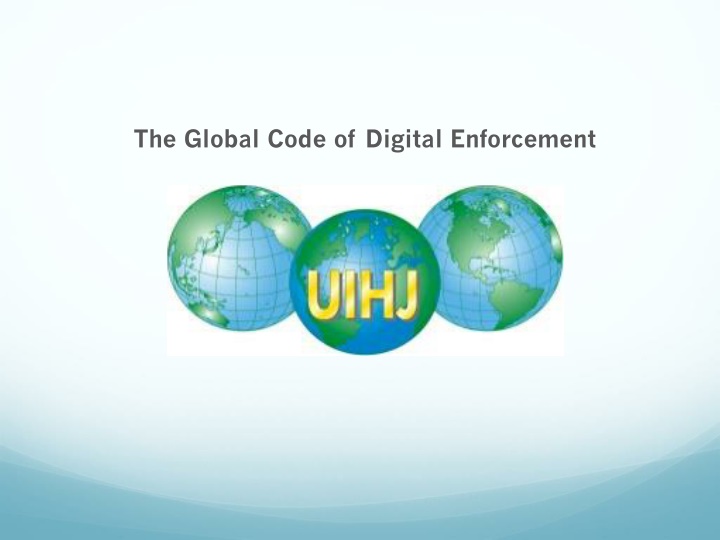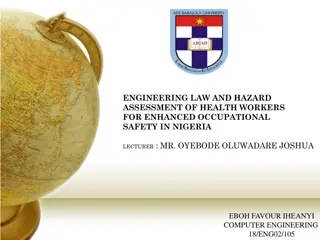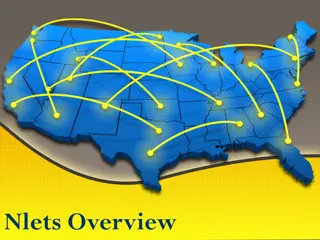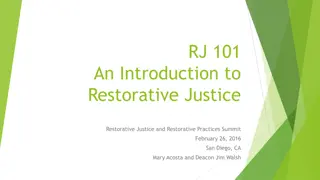The Global Code of Digital Enforcement: Embracing Innovation in Justice
The Global Code of Digital Enforcement introduces modern concepts and principles to govern the use of digital technology in enforcing court decisions. It promotes a balanced enforcement system by addressing the impact of digitalization on enforcement professionals and offering guidelines on e-enforcement, digital assets, and the use of artificial intelligence. With structured sections covering general principles, applicable laws, enforcement procedures, and more, this code aims to adapt to new economic factors and ensure effective, efficient, and equitable enforcement processes in a rapidly evolving world.
Download Presentation

Please find below an Image/Link to download the presentation.
The content on the website is provided AS IS for your information and personal use only. It may not be sold, licensed, or shared on other websites without obtaining consent from the author.If you encounter any issues during the download, it is possible that the publisher has removed the file from their server.
You are allowed to download the files provided on this website for personal or commercial use, subject to the condition that they are used lawfully. All files are the property of their respective owners.
The content on the website is provided AS IS for your information and personal use only. It may not be sold, licensed, or shared on other websites without obtaining consent from the author.
E N D
Presentation Transcript
The Global Code of Enforcement Guiding principles of enforcement Provisional measures Enforcement measures Enforcement officers
The Global Code of Enforcement A tool of good governance A model law Innovative A new balance
The Global Code of Enforcement introduces modern concepts such as Amicable enforcement Participatory enforcement Soft enforcement
The Global Code of Enforcement can serve as a legislative model It responds to new economic factors The right to effectively enforce is a key tool for economic development The enforcement process must be effective, efficient and equitable
The world is changing and evolving New challenges are waiting for us! We should support digitalization of justice, but we should NEVER allow the new technologies will replace us!
The Global Code of Digital Enforcement Digitalization has become a global phenomenon Enforcement professionals are strongly impacted by the digitalization of justice Defining universal principles which states should introduce into their national legislation to govern the use of digital technology in the enforcement of court decisions Promotion of a balanced enforcement system
The Global Code of Digital Enforcement e-enforcement enforcement on digital assets e-enforcement on digital assets
The Global Code of Digital Enforcement Structured in 7 parts: 1) General Principles of Digital Enforcement 2) Applicable Law to Enforcement 3) Principles specific to the activity of judicial officers 4) Digital Enforcement Procedure 5) Enforcement on Digital Assets 6) Use of Artificial Intelligence in Enforcement 7) Seizure of Crypto-Assets
The Global Code of Digital Enforcement 1) General Principles of Digital Enforcement The first two articles relate to respect for fundamental rights and respect for the ethical principles of digital use . Digitalization should not be an end in itself and can only be conceived with respect for human rights. There are also a series of guarantees aimed at protecting against the risks associated with the use of artificial intelligence.
The Global Code of Digital Enforcement 2) Applicable Law to Enforcement The principle is that identified and accessible digital assets are seized in accordance with the law of their location, in compliance with the principle of enforceability. With regard to unidentified or inaccessible digital assets, it is recommended to apply the law of the State that controls or ordered the enforcement. territoriality of
The Global Code of Digital Enforcement 3) Principles specific to the activity of judicial officers The main idea is to allow enforcement agents to use digital tools to carry out their activities. Regarding their activities and with the focus on the digitalization of justice, judicial officers should - Have the possibility to use digital tools - Have the knowledge to use digital tools but also Have the possibility to NOT use digital tools -
The Global Code of Digital Enforcement 4) Digital Enforcement Procedure After outlining the general principles (such as the creation of dematerialized seizures, while maintaining seizures), the focus here is also on electronic access to data. physical non-digital
The Global Code of Digital Enforcement 5) Enforcement on Digital Assets In order to be able to carry out enforcement on digital assets, the procedures for locating and seizing them must be adapted. In this regard, it is specified, for example, that national laws should define seizure procedures adapted to digital assets and regulate their legal regime.
The Global Code of Digital Enforcement 6) Use of Artificial Intelligence in Enforcement Artificial intelligence is intended to help enforcement agents appropriate enforcement measures. to assess the It is important to allow the enforcement agents the possibility of setting up a smart enforcement mechanism. The use of blockchain technology is also key for the enforcement agents, together with the debtor and the creditor, to set up an automated process enforcement, particularly when payments are made by cryptocurrency. of compulsory
The Global Code of Digital Enforcement 7) Seizure of Crypto-Assets It is recommended to create a national crypto-assets register and an obligation for the debtor to declare his crypto-assets to the enforcement agent enforcement. in charge of In addition, a distinction is made between the seizure of crypto assets in the hands of a third party (e.g. exchange platform) or the seizure in the hands of the debtor.
Thank you very much for your attention!























